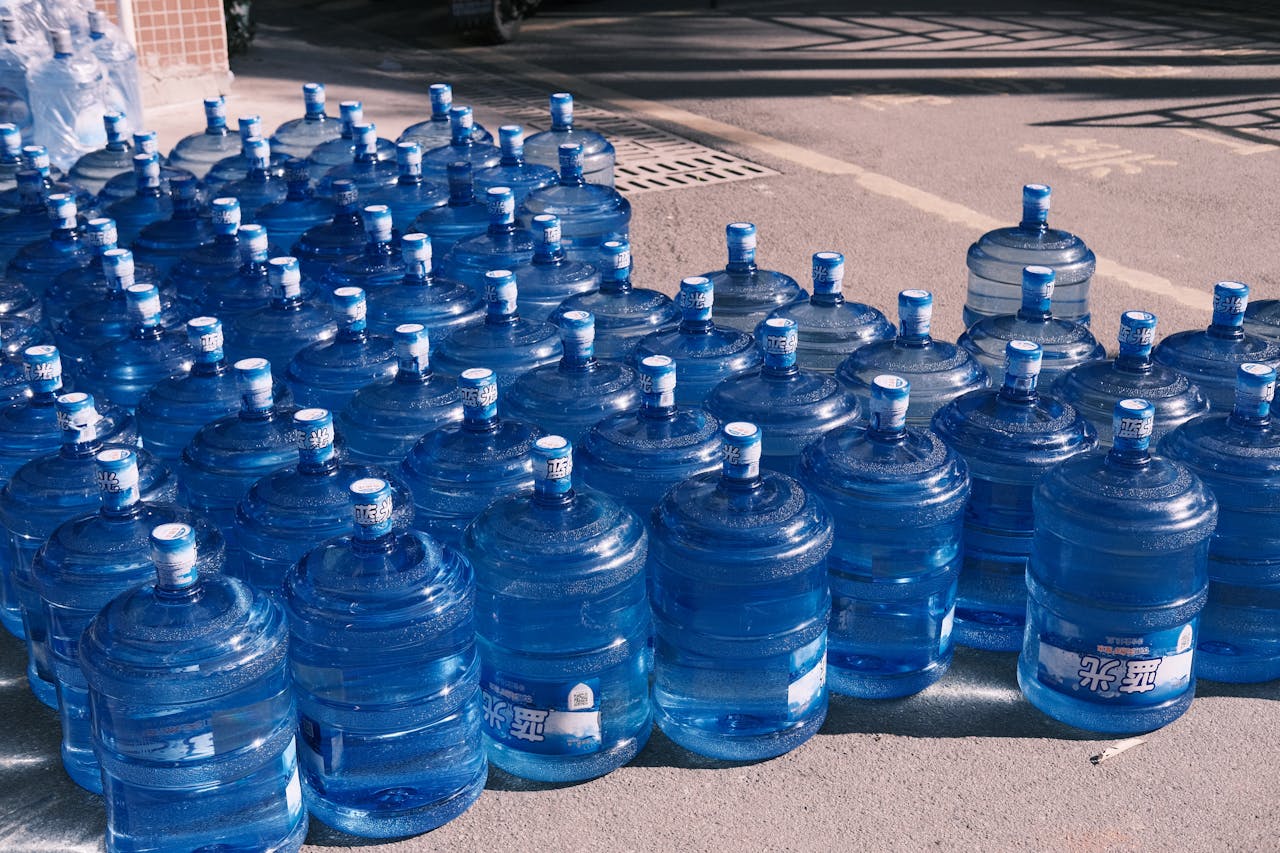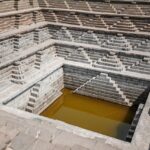The Best Containers for Water Storage

Water storage is a crucial aspect of emergency preparedness and resource management. Having a reliable supply of clean water can be vital during natural disasters, power outages, or other emergencies. Additionally, proper water storage is important for outdoor activities, farming, and in areas with unreliable water supplies.
There are various types of containers available for water storage, each with its own set of advantages and disadvantages. The choice of container can significantly impact the quality and safety of the stored water. Factors such as material durability, portability, capacity, and resistance to contamination all play important roles in determining the best container for specific needs.
This article will explore different types of water storage containers, discussing their characteristics, benefits, and potential drawbacks. By understanding these options, you can make informed decisions about which containers best suit your water storage requirements.
Plastic Containers
Plastic containers are among the most common and versatile options for water storage. They offer several advantages that make them popular for both household and commercial use.
Advantages of plastic
- Lightweight: Plastic containers are easy to move and transport, even when filled with water.
- Durable: Many plastic containers are resistant to cracking and breaking.
- Cost-effective: Plastic is generally less expensive than other materials.
- Versatile: Available in various sizes and shapes to suit different needs.
Types of plastic containers
- Polyethylene Terephthalate (PET or PETE): Commonly used for single-use water bottles. It’s lightweight and clear but not ideal for long-term storage.
- High-Density Polyethylene (HDPE): Often used for larger water storage containers. It’s durable, resistant to UV light, and suitable for long-term storage.
- Polycarbonate: Used in some reusable water bottles. It’s clear and durable but has faced controversy due to potential BPA leaching.
Safety considerations
- BPA concerns: Some plastics contain Bisphenol A (BPA), which may leach into water over time. Look for BPA-free options, especially for long-term storage.
- UV degradation: Sunlight can degrade some plastics over time. Store containers in a cool, dark place or choose UV-resistant options.
- Cleaning and sanitising: Plastic can absorb odours and flavours. Regular cleaning is important to prevent bacterial growth.
When choosing plastic containers, opt for food-grade plastics specifically designed for water storage. These are typically made from HDPE and are marked with a recycling symbol containing the number 2.
Glass Containers
Glass has been used for water storage for centuries and remains a popular choice for many due to its unique properties.
Benefits of glass storage
- Purity: Glass is non-porous and doesn’t leach chemicals into water.
- Taste preservation: It doesn’t impart any flavours to the stored water.
- Reusability: Glass can be used repeatedly without degradation.
- Recyclability: It’s 100% recyclable and environmentally friendly.
Drawbacks of glass
- Fragility: Glass containers can break if dropped or mishandled.
- Weight: They are heavier than plastic, making them less portable.
- Light exposure: Clear glass allows light to penetrate, which can promote algae growth.
Best uses for glass containers
- Short-term storage: Ideal for storing water in the refrigerator or on a table.
- Flavour-sensitive applications: Perfect for storing water used in cooking or brewing.
- Small-scale storage: Glass jugs or bottles work well for personal or family use.
When using glass containers, it’s important to handle them carefully to prevent breakage. Consider using protective sleeves or crates for larger glass containers to reduce the risk of accidents.
Stainless Steel Containers
Stainless steel has gained popularity as a water storage option due to its durability and modern aesthetic.
Durability and longevity
- Corrosion-resistant: High-quality stainless steel resists rust and corrosion.
- Impact-resistant: Can withstand drops and impacts better than glass or plastic.
- Long-lasting: With proper care, stainless steel containers can last for many years.
Advantages for water storage
- No leaching: Doesn’t release chemicals or flavours into the water.
- Temperature retention: Can keep water cool for extended periods.
- Hygiene: The smooth surface is easy to clean and resistant to bacterial growth.
Potential limitations
- Cost: Generally more expensive than plastic options.
- Weight: Heavier than plastic, which may affect portability.
- Denting: While resistant to breaking, stainless steel can dent if dropped.
Stainless steel containers are excellent for both short-term and long-term water storage. They’re particularly well-suited for outdoor use, such as camping or hiking, due to their durability and ability to maintain water temperature.
Ceramic Containers
Ceramic containers offer a traditional and often aesthetically pleasing option for water storage.
Traditional water storage method
- Historical use: Ceramic has been used for water storage for thousands of years.
- Cultural significance: Many cultures have specific ceramic water container designs.
Pros and cons of ceramic
Pros:
- Natural material: Made from clay, a natural and abundant resource.
- Cooling effect: Porous nature can help keep water cool through evaporation.
- Aesthetic appeal: Often beautifully designed and can be decorative.
Cons:
- Fragility: Can crack or break if dropped or exposed to sudden temperature changes.
- Weight: Generally heavy, especially when filled with water.
- Porosity: Unless glazed, can allow slow seepage of water.
Suitable scenarios for ceramic use
- Home decor: Ceramic containers can serve as both functional and decorative items.
- Small-scale storage: Ideal for storing drinking water for daily use.
- Outdoor settings: Can be used in gardens or patios for accessible water storage.
When using ceramic containers, it’s important to ensure they are food-grade and properly glazed if intended for long-term water storage. Unglazed ceramic can harbour bacteria in its pores and may not be suitable for extended water storage without regular cleaning and water replacement.
Large-scale Storage Options
For those needing to store large quantities of water, there are several options designed for high-volume storage.
1. Water barrels
Water barrels are cylindrical containers typically holding 30 to 55 gallons of water. They’re popular for home and small business use due to their manageable size and relative affordability.
Advantages:
- Stackable when empty, saving space
- Often come with tight-sealing lids to prevent contamination
- Can be fitted with outdoor faucets (spigots) for easy water dispensing
Considerations:
- May be difficult to move when full
- Require regular cleaning and maintenance
- Should be stored out of direct sunlight to prevent algae growth
2. Large storage tanks (like IBC totes)
Large storage tanks, like intermediate bulk containers (IBC totes or tanks) are square or rectangular containers typically holding 275 to 330 gallons of water. They’re often used in industrial settings but can also be suitable for large households or small communities.
Advantages:
- High capacity storage in a relatively compact footprint
- Often come with a built-in metal cage for added protection
- Can be easily moved with a forklift when full
Considerations:
- May be too large for some residential settings
- Require a stable, flat surface for safe use
- Can be expensive upfront, but cost-effective for large volume storage
3. Underground cisterns
Cisterns are large, often underground, tanks used for collecting and storing rainwater or other water sources. They can range from a few hundred to several thousand gallons in capacity.
Advantages:
- Large storage capacity without using above-ground space
- Protected from sunlight and temperature fluctuations
- Can be integrated with rainwater collection systems
Considerations:
- Significant installation cost and effort
- May require permits depending on local regulations
- Need regular maintenance to ensure water quality
Factors to Consider When Choosing Containers
Selecting the right water storage container involves considering several key factors:
1. Storage duration
- Short-term storage (days to weeks): Most container types are suitable. Focus on convenience and ease of use.
- Long-term storage (months to years): Choose containers that resist degradation and contamination, such as high-quality plastic or stainless steel.
2. Space availability
- Limited space: Consider stackable containers or vertical storage options.
- Ample space: Larger containers or multiple smaller ones might be suitable.
- Outdoor vs. indoor: Ensure containers are appropriate for their storage location (e.g., UV-resistant for outdoor use).
3. Portability needs
- Frequent movement: Opt for lighter materials like plastic or smaller containers.
- Stationary storage: Heavier options like large tanks or ceramic containers may be suitable.
4. Water volume requirements
- Personal use: Smaller containers (1-5 gallons) are often sufficient.
- Family or group use: Consider larger containers or multiple medium-sized options.
- Community or large-scale use: Look into large tanks or cisterns.
Maintenance and Cleaning
Proper maintenance and cleaning of water storage containers are crucial for ensuring the safety and quality of stored water.
General cleaning guidelines
- Frequency: Clean containers before first use and at least once every six months, or more frequently if water is consumed regularly.
- Basic cleaning process:
- Empty the container completely.
- Wash with mild soap and warm water.
- Rinse thoroughly with clean water.
- Sanitise with a solution of 1 teaspoon of unscented liquid household chlorine bleach per quart of water.
- Let the sanitising solution contact all surfaces for at least 30 seconds.
- Rinse well with clean water.
- Air dry completely before refilling.
Material-specific care instructions
- Plastic: Avoid using hot water, which can break down the plastic. Don’t use abrasive cleaners.
- Glass: Can withstand hot water and most cleaning methods. Be careful to avoid thermal shock.
- Stainless Steel: Avoid chlorine bleach as it can corrode the metal. Use vinegar for mineral deposits.
- Ceramic: If unglazed, may need more frequent cleaning due to its porous nature.
Water Treatment for Long-term Storage
Treating water for long-term storage helps prevent the growth of harmful microorganisms and ensures the water remains safe to drink.
Purification methods
- Boiling: Bring water to a rolling boil for at least one minute to kill most pathogens.
- Chemical treatment: Use water purification tablets or unscented liquid household chlorine bleach (8 drops per gallon for clear water, 16 drops for cloudy water).
- Filtration: Use a high-quality water filter certified to remove bacteria and parasites.
Additives for water preservation
- Chlorine bleach: Add a small amount to already-treated water for long-term storage (1/8 teaspoon per gallon).
- Commercial water preserver: Follow manufacturer’s instructions for use.
- Rotating stored water: Replace stored water every 6-12 months, even if treated.
Conclusion
Water storage containers come in various materials and sizes, each with its own strengths and weaknesses. The choice between them often depends on specific needs, such as storage duration, environment, and intended use of the water. By understanding these options, you can select the most appropriate containers for your water storage requirements.
Proper water storage is crucial for emergency preparedness and in areas with unreliable water supplies. By choosing the right containers, maintaining them properly, and treating water appropriately, you can ensure a safe and reliable water supply when you need it most.
Bear in mind that the best water storage solution depends on your specific needs, space constraints, and intended use. Regular maintenance and rotation of stored water are key to maintaining its safety and quality. By following these guidelines, you can be confident in your ability to store water effectively for both short-term and long-term needs.
As we consider the best ways to store water in our homes, it’s important to remember that many around the world lack access to clean water. You literally cannot store what you don’t have, let alone store it properly. Join us at AquaMaya as we help make clean water a reality for all.
Sources:
- https://www.popularmechanics.com/home/g60803960/best-water-storage-containers/
- https://www.cdc.gov/global-water-sanitation-hygiene/about/about-safe-water-storage.html
- https://www.mayoclinic.org/healthy-lifestyle/nutrition-and-healthy-eating/expert-answers/bpa/faq-20058331
- https://www.sciencefriday.com/educational-resources/investigate-how-sunlight-affects-plastic-toys/
- https://www.epa.gov/ground-water-and-drinking-water/emergency-disinfection-drinking-water
- https://extension.usu.edu/preserve-the-harvest/research/storing-water






